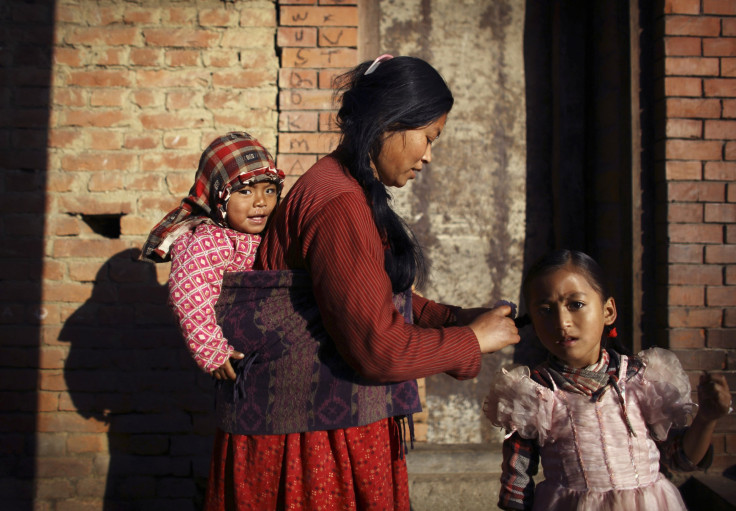Nepal: Abortion, The Preference For Baby Boys And A Gender Imbalance

Like virtually all South Asian and East Asian societies, couples in Nepal prefer to give birth to baby boys rather than girls. This long-held cultural practice has led to the abortion of millions of female fetuses and created a serious gender imbalance across the region, researchers said.
Researchers from the University of California-San Diego School of Medicine have just released a study in which they declared that the cultural preference for sons over daughters is even more of an intractable problem in Nepal than such social ills as poverty, under-education, and high maternal and child mortality rates.
There also appears to be a link between the preference for infant males and the use of contraception among women.
In research published in the International Journal of Gynecology and Obstetrics, the UC Sand Diego school of medicine's team found younger wives were least likely to use birth control measures -- 24 percent of wives between ages 20-24 and only 14 percent of wives 15-19 use contraceptives in Nepal, they said.
Lead study author, Anita Raj, a professor of medicine, noted the lack of contraceptive use was particularly notable among wives who didn't have any sons.
That is, young women are pressured to give birth to sons, something that Raj described as “daughter aversion.” Researchers believe part of the reason behind this cultural bias has to do with finances, since men historically earn more money than women do.
“But tradition also says sons take care of parents,” she said. “Daughters are supposed to leave the family and become the daughter of the in-laws, no longer the daughter of the parents. Practices like that are going to affect investment in your daughters.”
Raj also noted that improved education standards in Nepal haven't reduced the preference for sons, nor has the younger generation rejected this cultural practice – although they likely remain heavily influenced by customs of the older generations.
“Even after adjusting for child marriage, you see it,” she said. “Girls who marry younger may be more vulnerable to son-preference because they are more likely to have their reproductive decision-making affected -- or controlled -- by older husbands and in-laws, both of whom may desire sons from these young wives.”
Raj added, “Until girls are valued as much as boys in families, we will continue to see these findings. We hoped [younger] generations would make it better, but this study is with young mothers and demonstrates that the beliefs are being carried into the [newest and] youngest generation of child-bearers.”
Overall, only one in five young, married women in Nepal use contraception, with the lowest rates found in rural areas where educational levels are lower, researchers said.
Separately, abortions, which became legal in Nepal in 2002 under certain circumstances and completely safe and affordable by 2010, are becoming increasingly common in Nepal – and they are frequently used to terminate female offspring, research indicates.
The Nepali Times said last September that at least 50,000 unborn baby girls are aborted each year after parents discover the gender of the fetus on ultrasound scans.
Ironically, while the legalization of abortion was expected to decrease maternal mortality rates, it has instead, as an editorial in the Nepali Times pointed out, led to the “slaughter” of thousands of unwanted female fetuses.
“The [abortion] law has benefited tens of thousands of women across Nepal, and freed many innocent unjustly jailed women,” an editorial in the newspaper said.
“But as abortion became easier, it has resulted in the appalling spread of female feticide.”
The preference for boys remains a dominant bias across most of South and East Asia, where girls typically are viewed as financial burdens who require a dowry when they marry. Meanwhile, boys are regarded as income-earners who will perpetuate the family's name and lineage. There's also a continuing reluctance to allow daughters to inherit property.
As a result of this situation, the ratio of males to females in Nepal is 1.04-to-1 – and may continue to widen, some fear.
Last summer, Zoe Williams, a columnist for the Guardian newspaper in Britain, described the plight of young women in Nepal.
“[One-third] of marriages feature one participant under 15, usually the girl,” she said in the column. “They still practice ‘chhaupadi’ in some rural areas, which means that when you're menstruating, you are considered so unclean that you have to go and live in the shed …
"To see ovulation as a bad omen and bringer of family illness is not great for the status of women. There are villages where, even if you are raped, the act of intercourse results in you being de facto married to the rapist.”
Nepal is renowned for its immense natural beauty and sweeping mountain vistas. Nonetheless, it remains one of the poorest and most-undeveloped nations, factors that likely exacerbate its widening gender gap, experts believe.
Volunteer Society Nepal, a nonprofit group established to help the country recover from a decade-long civil war, cited the following statistics: 42 percent of Nepal’s population lives below the poverty line on less than $240 a year; 42 percent of the population is unemployed; more than half (51 percent) are illiterate; and 54 percent of Nepali children are malnourished.
© Copyright IBTimes 2024. All rights reserved.





















